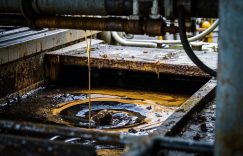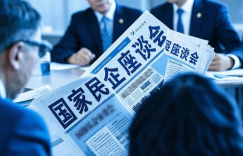
In the previous course, we talked about important matters in national policies, such as “national unified market”; but there is another type of matters, which are “urgent matters” that the country is anxious to do. The changes in industry and wealth caused by such matters will be more rapid and fierce. For example, the “two heavy” and “two new” policies we are going to talk about today. You may often hear these two words, but you don’t understand their meaning, but I can give an example, that is, the national subsidies that everyone is scrambling for recently, which is “old for new”, one of the “two new”.
How anxious is the country to promote the “two heavy” and “two new” policies? I list a few time nodes. In February last year, the projects were sorted out, funds were allocated in May, the construction list was issued in August, the funds were in place in October, and more than half of the projects started. In total, trillions of funds were invested in less than one year. The signal sent is only one: it is urgent.
Therefore, this type of policy has the most drastic and direct impact on the short term. After understanding its importance, let’s analyze it carefully now.
The meaning and intention of the “two heavy” and “two new” policies
Let’s first explain what the “two heavy” and “two new” policies are. This is a comprehensive policy that not only solves the national development problems mentioned at the beginning of our course, but also solves security problems.
“Two heavy” includes two things: First, “national major strategic project construction”, such as investing about 40 billion to support the “double first-class” construction of universities. Second, “key field security capacity building”, such as in the field of ecological security, 32 billion to support the “Three Norths” project; in the field of food security, about 60 billion to support the construction of high-standard farmland in Northeast China.
And “two new” refers to “large-scale equipment renewal” and “consumer goods replacement”, the former mainly targets equipment, such as power grid equipment, medical equipment, etc.; the latter mainly targets residents’ daily durable consumer goods, such as washing machines, refrigerators, etc.
Okay, after talking about the policy content, what is the intention behind it?
Simply put, “two heavy” is to create a “big country with a big hand” and do big things. For example, the Yangtze River high-speed rail project has a total investment of about 550 billion yuan; for example, the urban renewal project has arranged various funds of more than 470 billion yuan; and the new urbanization construction has arranged funds of nearly 300 billion yuan, all of which are large projects of hundreds of billions of yuan.
The “two new” is actually a “replacement and domestic substitution project”. The old equipment and old products in the past should be replaced with new equipment and new products with low energy consumption, low pollution, and more intelligent, and they should also be replaced with independent and controllable domestic equipment and domestic products. In addition, through this method, direct subsidies are given to stimulate consumption of people below the middle class. I think this measure can be said to kill two birds with one stone, which looks much better than the crude large-scale infrastructure investment to stimulate the economy.
Policy multiplier: understand the value of “two heavy and two new”
The country is very anxious and the investment is also very large, so what is the actual effect? The original words of the official statement: The implementation of the “two new” and “two heavy” policies has achieved obvious results, which strongly supported the annual economic growth in 2024. I think the meaning is very clear. We did a good job last year and will continue to increase our efforts this year.
How good is it? Let’s analyze the “two new things”.
Let’s first look at the old-for-new policy for consumer goods. In 2024, the country will invest a total of 150 billion yuan, which is the policy cost. What is the policy benefit? From the perspective of investment, the 150 billion yuan is mainly allocated to automobiles, home appliances, home decoration and office supplies. Pay attention, whichever field is allocated is the huge wealth of that field, and the new sales of these four categories of consumer goods are about 3506 150 billion, most of these 300 billion are extra. 150 billion cost vs. 350.6 billion revenue, a simple comparison shows that the policy benefit is 2.33 times the policy cost.
At this point, I want to introduce you to a useful new tool – the policy multiplier. The higher the multiplier, the better the effect. Really good policies generally have the ability to “make a difference with a little effort”. For example, the 2.33 times mentioned above is the policy multiplier for “trading old consumer goods for new ones”.
Well, with this new tool, let’s use it to analyze “large-scale equipment renewal”. In 2024, the incremental funds for equipment renewal will be about 383.4 billion, while the policy cost will be 150 billion, so the policy multiplier will be about 2.56 times. The conclusion of the comparison is that the effects of both policies are very good, but the equipment renewal effect is better.
Let’s continue to ask: Why is the equipment renewal effect better? Let’s look at two sets of data: one is the field of power grid equipment. In 2024, State Grid and China Southern Power Grid stated that they would increase investment to promote the renewal of power grid equipment, adding nearly 80 billion in funds. The second is the field of medical equipment. In May last year, the National Development and Reform Commission specifically released a more specific implementation plan. After that, more than 1,000 medical equipment update projects were approved, with a total amount of more than 40 billion yuan. Do you find anything in common between the two? The leaders of these two fields are central state-owned enterprises and public institutions such as hospitals.
Therefore, I think the effect of equipment update is better because most of the participants are central state-owned enterprises or public institutions, which are relatively more responsive to policies, so the policy transmission speed is faster. In the past year, equipment update projects led by central state-owned enterprises and public institutions were significantly better than those of private enterprises.
Here I would like to add one sentence, why do we need to review the policy effect? The logic is very simple. Only policies with high effect multipliers can be vigorously continued. Reviewing the policy effect is the basis for predicting the future. So I judge that the country will definitely either optimize the replacement of old consumer goods with new ones and increase the intensity. I will talk about this new optimization below. Or it will invest more money in equipment updates with better cost-effectiveness. Local governments are especially willing to do so, because consumption is temporary, but new equipment will enhance the competitiveness of local enterprises and continue to create value, so local governments are definitely more willing to update equipment. You see, this is what I mentioned in the first lecture of the course. Using corporate logic to analyze the benefits of the government, through simple calculations, you can get more incremental information, even incremental logic.
Two new trends behind the “two-fold” and “two-new” policies
After summarizing the latest policy adjustments, I summarized two new trends:
First, the new direction of the “two-fold” and “two-new” policies is a more profound regional resource reset. National policies are “double signals”: first, the visible policies written in the obvious document clauses; second, the invisible intentions behind the document language.
For example, this time “urban renewal” was included in the “two-fold” policy and became a key support project. The National Housing and Urban-Rural Construction Work Conference stated that in 2025, urban renewal should be vigorously implemented to fully complete the renovation of old urban communities built before the end of 2000. Here, think about it first. Which is the keyword in this sentence? You may say that “vigorously implement” is the keyword, indicating that the intensity is strengthened, or “fully complete” is the keyword, indicating that time is tight and the task is heavy.
But I think the keyword is “the end of 2000.” Let’s take a look back at the history of real estate. China’s real estate has experienced three booms: the protagonists before 2000 were first-tier cities, the protagonists before 2007 were second-tier cities, and the protagonists of the most recent one were third- and fourth-tier cities. Therefore, I analyzed that if the policy is limited to “the end of 2000”, then the actual implementation will tend to be in favor of first-tier cities. So if you can find a keyword “the end of 2000”, it will help you eliminate a lot of wrong options. And this range can be further narrowed. Taking Shanghai as an example, the construction of Shanghai’s five new cities was written into the government work report in 2021, so it is not the focus and should be excluded. In this way, the result is very clear. The “end of 2000” of the policy is equivalent to the “old, broken and small” in the city center of first-tier cities.
Why is the policy written like this? Because if you renovate the old, broken and small houses in the core areas of these big cities, the housing prices may rise by another 30%, with a higher premium, and it also raises the prices of new houses in the surrounding areas. The same money is used to renovate small cities in the central and western regions, and the new premium may not be as high as the cost. The people who write policies in the country are all smart people, and they must know to invest more resources in areas with higher premiums. So you see, these words are not directly written in the policy documents, but the signals are there.
Let me give you another example to analyze the signals and specific beneficiaries behind the old-for-new policy. We can look at the recent policy optimization of “old-for-new for consumer goods”, which has three details: first, adding 3C products such as mobile phones; second, the subsidy objects are limited to non-high-end mobile phones below 6,000 yuan; third, the subsidy limit is 500 yuan, and the most cost-effective is around 3,000 yuan. Because 3,000 yuan is the main battlefield of Chinese mobile phone manufacturers and the consumption range of people in small and medium-sized cities.
What is the impact? Last year, everyone was scrambling for iPhones, but this year it may not be so strong, because this is not a policy goal and cannot be supported by policy funds. The country supports domestic mobile phones priced between 3,000 and 6,000 yuan. These manufacturers and wholesale sales channels are the profit-makers. This is why we need to do a more detailed policy analysis. In short, our goal is to understand the signals behind the policy, know where the money is flowing, and then have a clear mind and follow the money. We should use the policy pot to cook our own dishes.
Second, the “two heavy” and “two new” policies also imply the reset of industrial layout. These industries are basically “potential stocks” and will be mentioned in policy documents, but the length is not large, so we still need more information to cross-verify.
For example, in the field of recycling and circulation. Let me help you refine the original text of the document: continue to support the construction of high-level recycling and recycling projects… encourage platform companies to participate in the development of the “Internet + second-hand” model… severely crack down on “workshop-style” recycling and disassembly… You see, what to support, what to encourage, and what to crack down on is clear at a glance. In the field of recycling, the country wants large-scale, high-level, and even industrial cycles under the industrial Internet. How can such a small enterprise do it? And there were many gray areas in this field in the past. When the national team enters the field in the future, the strong dragon will definitely take down the local snake.
More importantly, the country has already started to act. In October 2024, the new central enterprise China Resources Recycling Group was established in Tianjin, and the business involved was the recycling and utilization of renewable resources. Local governments responded more quickly, and corresponding local state-owned enterprises were also established in Sichuan, Shandong, Guangdong, Zhejiang, Tianjin and other places. The industries that both the central and local governments are investing heavily in mean that they are “getting serious”, and this is a signal of industrial reset. There are many such industrial resets, and I will explain them in detail in the following courses.



